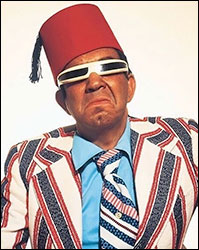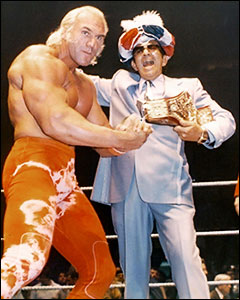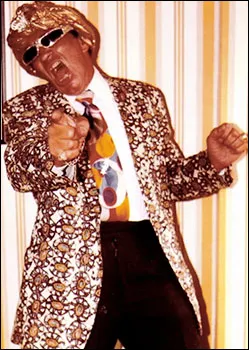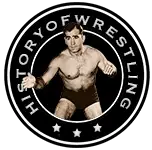by Stephen Von Slagle

Often in wrestling, the men who go on to become “managers” generally do so after spending time in the ring as a wrestler. Successful managers like Lou Albano, Bobby “The Brain” Heenan, “Classy” Freddie Blassie, Arnold Skaaland, Skandar Akbar, “Number One” Paul Jones, “Precious” Paul Ellering, and many others all made the transition after years of battling in the squared circle. However, the man who is thought by many to have been perhaps the greatest manager of his era never wrestled a day in his life. At barely 5′ 7″ and weighing around 130 lbs., he was certainly no physical threat. But in his case, size didn’t matter, unless you were referring to the size of his brain, in which case it meant everything. It was his intellect, an almost “mad genius” aspect to his character, that allowed this frail man to become the WWWF’s diabolical leader of champions, perhaps the most successful manager of his day. There is no doubt that he was a driving influence in wrestling, and aspects of his ingenious persona have been openly praised and borrowed by the likes of Paul E. Dangerously, as well as James E. Cornette, James Vandenburg, and other managers that have come after him. Although he went by several names during lengthy career, he was most widely known as The Grand Wizard of Wrestling.
 Ernie Roth was born on August 30, 1926 in Ohio and it was there that he came into contact with Jim Barnett, who helped Roth get into the pro wrestling business. He first made waves not as The Wizard, but rather, characters such as Mr. Clean and J. Wellington Radcliffe. However, it was as Abdullah Farouk, the “Middle Eastern handler” supposedly sent by The Sheik’s wealthy family to look after their son’s affairs in America, that he became a major star. The turban-wearing Farouk, in addition to trying to maintain control over his crazed protégé, often took time to insult all of the U.S. fans in the audience and watching on TV. His small stature combined with his cowardly and deceitful methods made him a man that wrestling fans of the era loved to hate and the “Arabian” duo achieved great success in the Detroit territory during their five-year partnership, with Farouk guiding The Sheik to numerous championships during the 1960s.
Ernie Roth was born on August 30, 1926 in Ohio and it was there that he came into contact with Jim Barnett, who helped Roth get into the pro wrestling business. He first made waves not as The Wizard, but rather, characters such as Mr. Clean and J. Wellington Radcliffe. However, it was as Abdullah Farouk, the “Middle Eastern handler” supposedly sent by The Sheik’s wealthy family to look after their son’s affairs in America, that he became a major star. The turban-wearing Farouk, in addition to trying to maintain control over his crazed protégé, often took time to insult all of the U.S. fans in the audience and watching on TV. His small stature combined with his cowardly and deceitful methods made him a man that wrestling fans of the era loved to hate and the “Arabian” duo achieved great success in the Detroit territory during their five-year partnership, with Farouk guiding The Sheik to numerous championships during the 1960s.
But as the 1970s rolled in, the successful duo made an amicable split. Abdullah Farouk dropped out of the scene, while The Sheik went on to a decade more of insanity. Meanwhile, in the east coast cities of the World Wide Wrestling Federation, with the new decade came a devious and flamboyant new manager. Known as The Grand Wizard of Wrestling, he quickly burst into the WWWF storyline, lending his large vocabulary and quick wit to his various protégés. Almost immediately, The Wizard became a truly hated figure in the Northeast. However, more importantly, the Grand Wizard quickly led his main protégé at the time, Stan “The Man” Stasiak to the WWWF Heavyweight title on December 1, 1973 when Stasiak defeated the reigning champion Pedro Morales. The fact that Stasiak would lose the WWWF championship just nine days later to “The Living Legend” Bruno Sammartino did not tarnish The Wizard’s accomplishment, or his winning ways.
 In fact, within five years of Stasiak’s loss, The Grand Wizard was once again managing the WWWF Heavyweight champion, this time in the hulking, tanned, psychedelic figure of the man from Paradise Valley, Arizona, “Superstar” Billy Graham. Led by the genius of The Wizard, the revolutionary, extremely charismatic new champion would become the man to finally, once and for all, end Bruno’s eleven-year tenure as WWWF champion. After only a few years in the promotion, The Grand Wizard of Wrestling was once again at the top of the WWWF The colorful, articulate Wizard, with his loud polyester clothing, turban, and ever-present sunglasses was an inspired match for the equally flamboyant “Superstar” Billy Graham. The colorful, charismatic duo were a nearly unbeatable combination of power and intelligence and together they became the most entertaining package in pro wrestling. Considering that the WWWF’s management had preferred babyface champions throughout its history to that point, the fact that Graham and The Wizard were so popular, despite their “bad guy” personas, was quite an accomplishment for a heel WWWF champion and manager in that era.
In fact, within five years of Stasiak’s loss, The Grand Wizard was once again managing the WWWF Heavyweight champion, this time in the hulking, tanned, psychedelic figure of the man from Paradise Valley, Arizona, “Superstar” Billy Graham. Led by the genius of The Wizard, the revolutionary, extremely charismatic new champion would become the man to finally, once and for all, end Bruno’s eleven-year tenure as WWWF champion. After only a few years in the promotion, The Grand Wizard of Wrestling was once again at the top of the WWWF The colorful, articulate Wizard, with his loud polyester clothing, turban, and ever-present sunglasses was an inspired match for the equally flamboyant “Superstar” Billy Graham. The colorful, charismatic duo were a nearly unbeatable combination of power and intelligence and together they became the most entertaining package in pro wrestling. Considering that the WWWF’s management had preferred babyface champions throughout its history to that point, the fact that Graham and The Wizard were so popular, despite their “bad guy” personas, was quite an accomplishment for a heel WWWF champion and manager in that era.
In addition to his two World Champions, The Wizard managed dozens of top wrestlers, both Intercontinental and tag team champions, as well as some of the toughest challengers to Sammartino and Bob Backlund’s WWF championship reigns. Intercontinental champions such as Pat Patterson, Greg “The Hammer” Valentine, Ken Patera, and “Magnificent” Don Muraco all enjoyed lengthy title runs thanks, in part, to their collective manager, The Grand Wizard of Wrestling. He also led the duo of Mr Fuji and Prof. Toru Tanaka to two WWWF tag team championships. Other WWE legends such as Killer Kowalski, Ernie “The Big Cat” Ladd, Stan Hansen, Sgt. Slaughter, Ox Baker, Crusher Blackwell, “Big, Bad” Bobby Duncum and many other greats from WWE’s past were guided at one point in time by the evil genius of the Grand Wizard.
 As the 1970s turned into the 1980s, the Grand Wizard was busy at work, tirelessly attempting to regain the coveted WWF title from his nemesis, Bob Backlund, through one of his men. His three main protégés in the early 1980s, Intercontinental champions Greg Valentine, Ken Patera and Don Muraco, all came very close to bringing the Wizard his prized third World title, but one way or another, Backlund was able to maintain his grasp on the WWF championship belt. As the new decade got underway, it was business as usual for The Grand Wizard, namely taking Backlund’s WWF title away from the “All-American Boy” through any means necessary. Fate, not storyline developments, would make sure that did not happen.
As the 1970s turned into the 1980s, the Grand Wizard was busy at work, tirelessly attempting to regain the coveted WWF title from his nemesis, Bob Backlund, through one of his men. His three main protégés in the early 1980s, Intercontinental champions Greg Valentine, Ken Patera and Don Muraco, all came very close to bringing the Wizard his prized third World title, but one way or another, Backlund was able to maintain his grasp on the WWF championship belt. As the new decade got underway, it was business as usual for The Grand Wizard, namely taking Backlund’s WWF title away from the “All-American Boy” through any means necessary. Fate, not storyline developments, would make sure that did not happen.
Away from the camera, Ernie Roth was a trusted, longtime employee of the McMahon family for years and an important part of the management teams of both Vincent J. McMahon and, later, Vincent K. McMahon. In 1995, The Grand Wizard was one of the first men inducted into the WWE Hall of Fame.
On October 12, 1983, Ernie Roth, a.k.a. The Grand Wizard of Wrestling, died of a heart attack in his Fort Lauderdale home at the age of 57.

